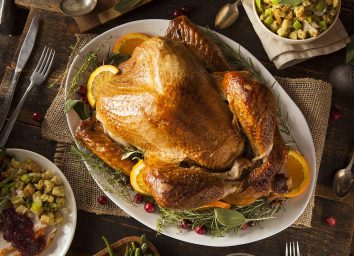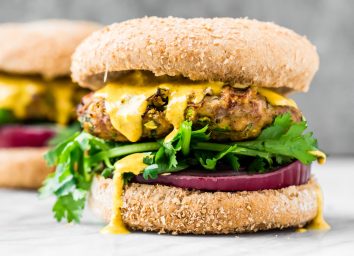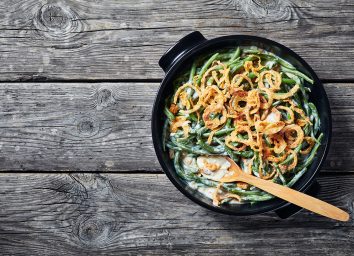The Best Turkey-Cooking Tips, From an Expert
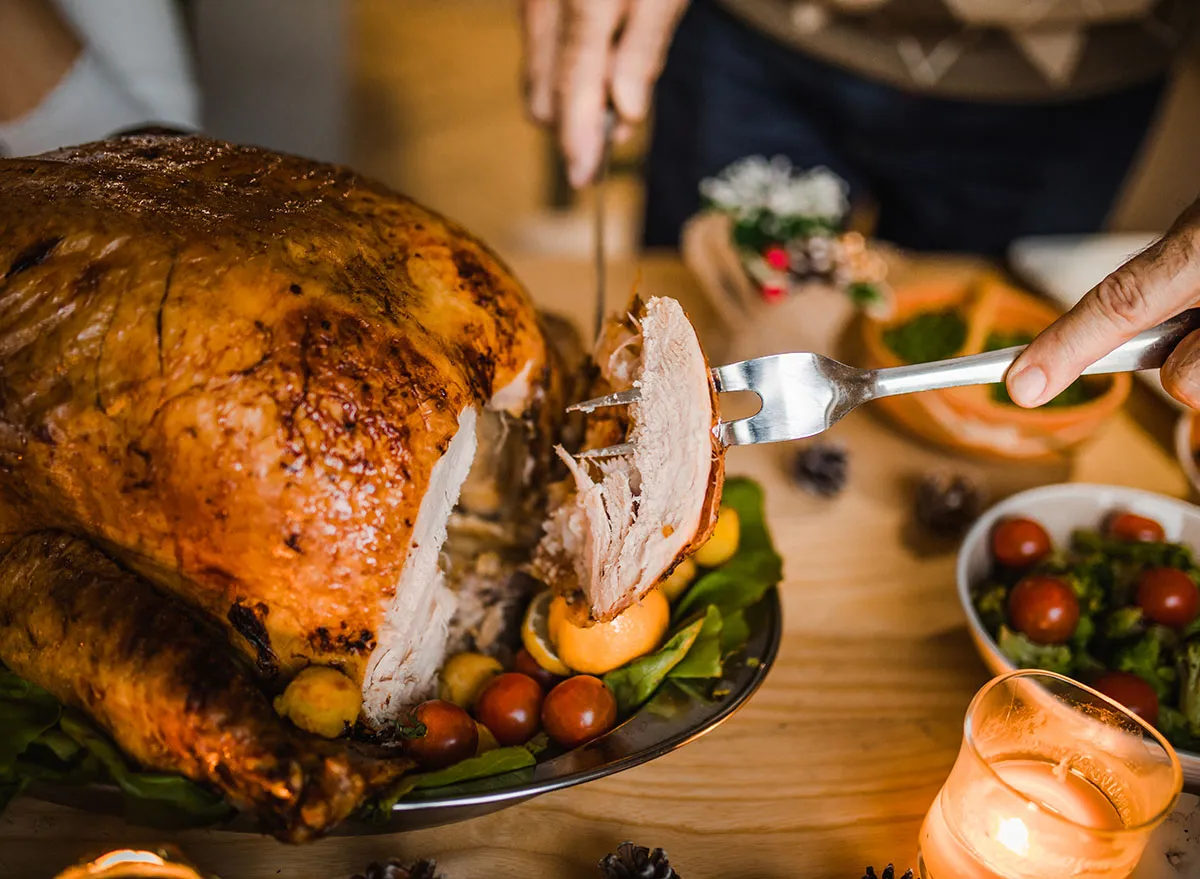
Thanksgiving turkey can be one of the most intimidating dishes to tackle for a newbie chef (or anyone, for that matter). From the thawing to the seasoning, brining, and stuffing—things can get overwhelming, fast. Thankfully, according to the pros, there are simple things you can do to perfect your turkey, whether it's your first or 15th time.
Turkey-newbies, have no fear. We got the best trick on how to cook a turkey from pro chef Daniel Angerer, of New York City's Hu Kitchen, and Jasmine Shea, nutrition consultant for Bubs Naturals and founder of Your Dinner Is Planned. They've got the tips for making a turkey you (and your guests) won't forget.
And for more, check out these 15 Classic American Desserts That Deserve a Comeback.
Buy enough turkey for your guests
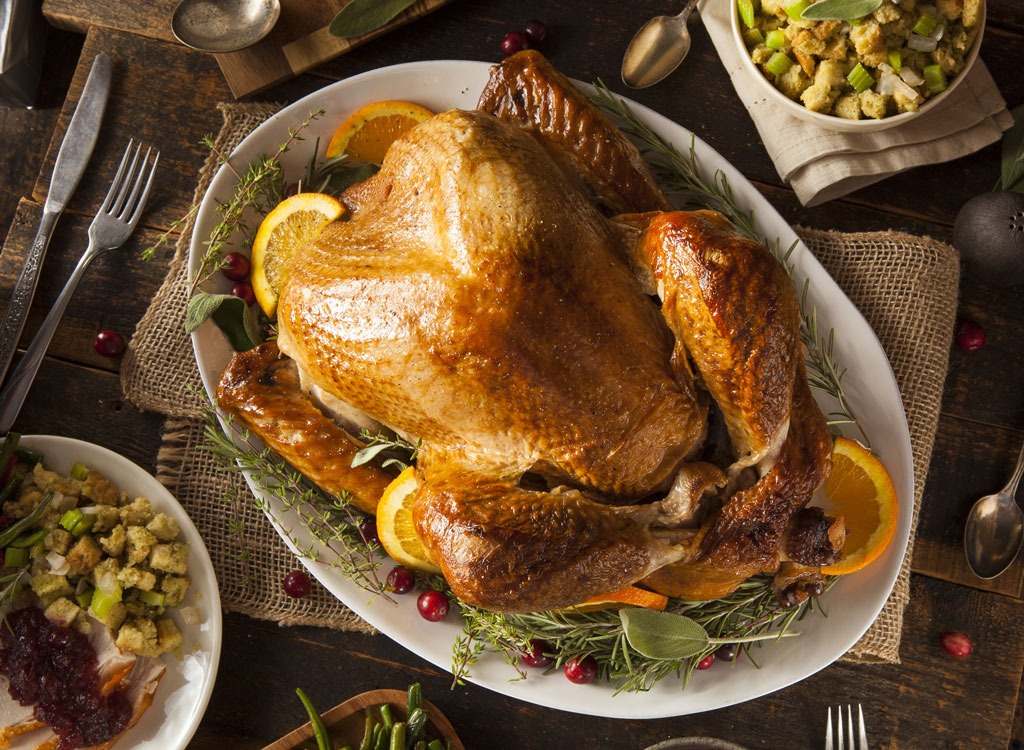
Thanksgiving is arguably the most food-focused holiday of the year, so don't forget that guests will gobble up the turkey faster than you think! Don't risk the chance of sending them home hungry or disappointed they didn't get to feast on the star of the Thanksgiving show: the turkey.
"For every four guests, you'll want approximately six pounds of turkey. This means if you have 12 guests, you'll want to prepare an 18-20 pound turkey," says Shea. Here's how to know what size turkey to buy.
Buy organic, free-range turkey (if you can)
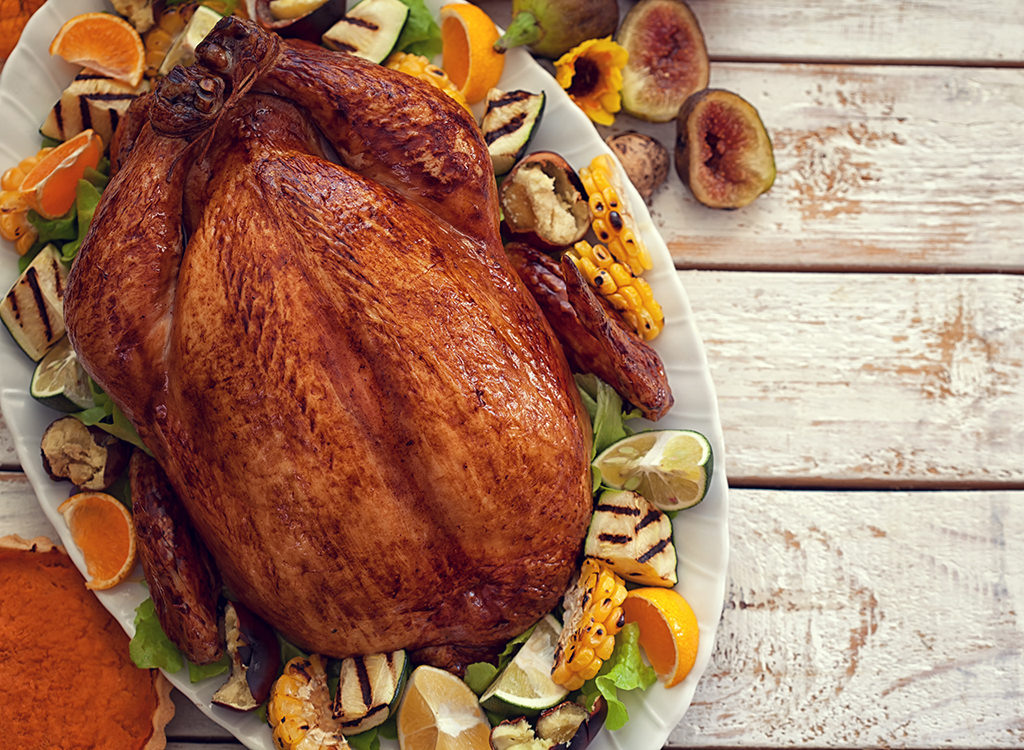
The quality and sourcing of your bird are important for one that is optimally tasty (and free from less-than-healthy additives). While you may be tempted to grab the first turkey at the grocery store that meets your weight requirements, see if you can find one that is organic and free-range. If the turkey is organic and free-range, it means that it was able to roam freely on the pasture and eat its natural diet (one that is free from pesticides and chemicals).
Purchase your frozen turkey well in advance
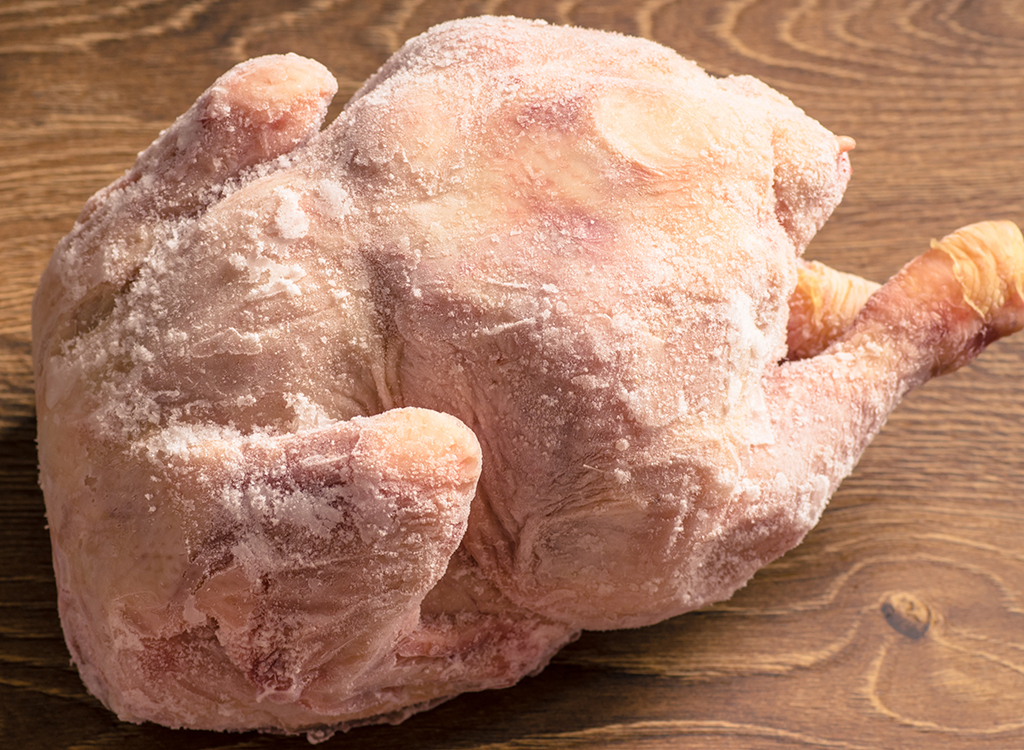
Grocery stores can resemble the Hunger Games in the days before Thanksgiving. Don't risk the chance of fighting someone over the last turkey because you waited until the last minute. If you know you'll be busy the week of Thanksgiving, go ahead and buy your frozen turkey as soon as they're available at the stores (usually starting in early October).
Safely handle uncooked turkey
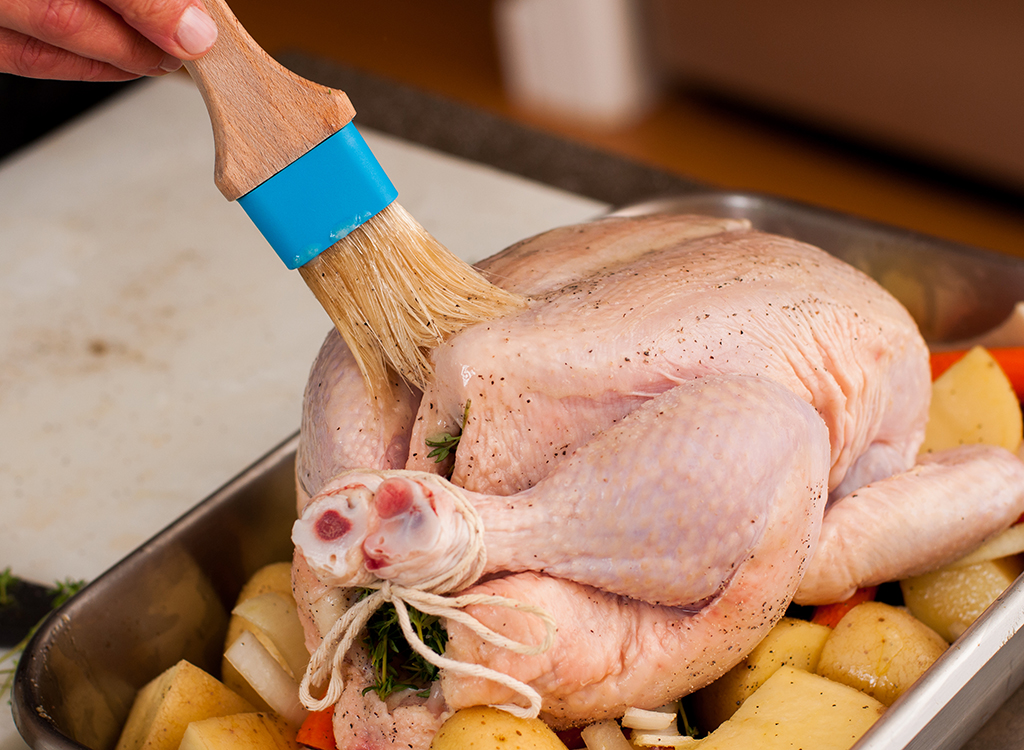
Because you want to avoid spreading any kind of bacteria that can come from handling raw poultry, be sure to take care when handling your raw turkey. According to the CDC, harmful bacteria can grow on anything poultry touches, so be sure to wash everything that you use when prepping the turkey. But avoid rinsing the turkey itself.
Check that it's completely thawed before cooking
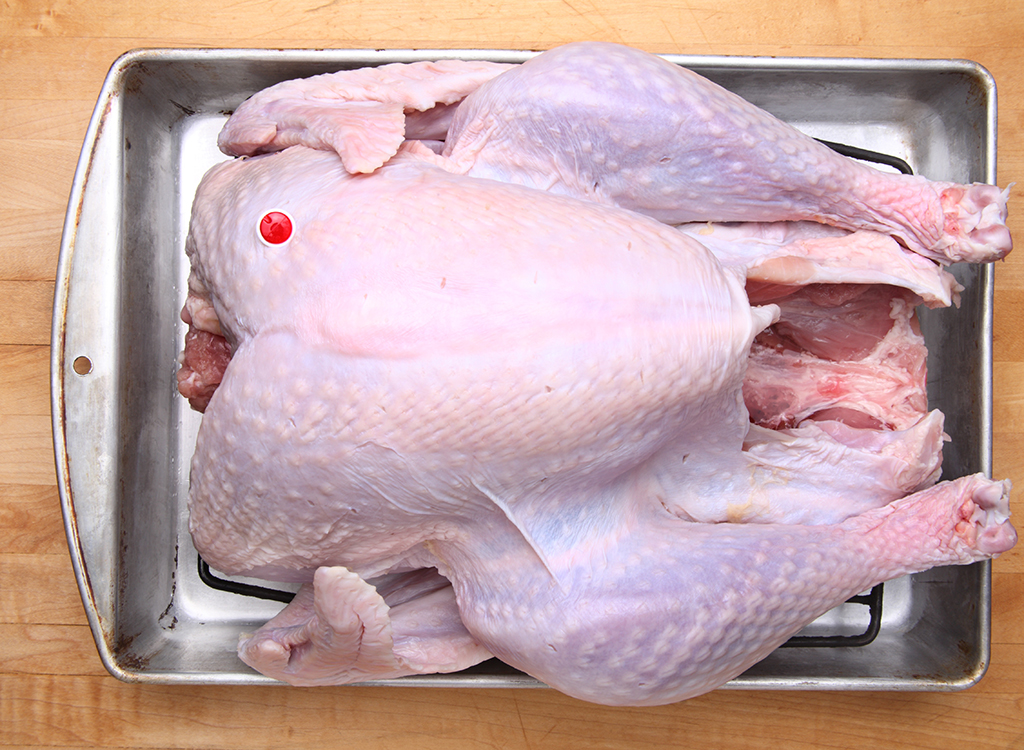
In a hurry to cook the turkey? Don't rush it and put a still-icy bird in the oven. Make sure to check if it's completely thawed!
Cook turkey right away when it's thawed

If you buy a fresh turkey, you know it has to be cooked right away, and the same goes for a frozen turkey that has been thawed. Be ready to cook the turkey right when it is completely thawed because you don't want it sitting around just waiting for bacteria to grow. According to Foodsafety.gov, you can expect to thaw a turkey for 24 hours per 4-5 pounds in the refrigerator.
Thaw it in the fridge or in a bowl with cool water
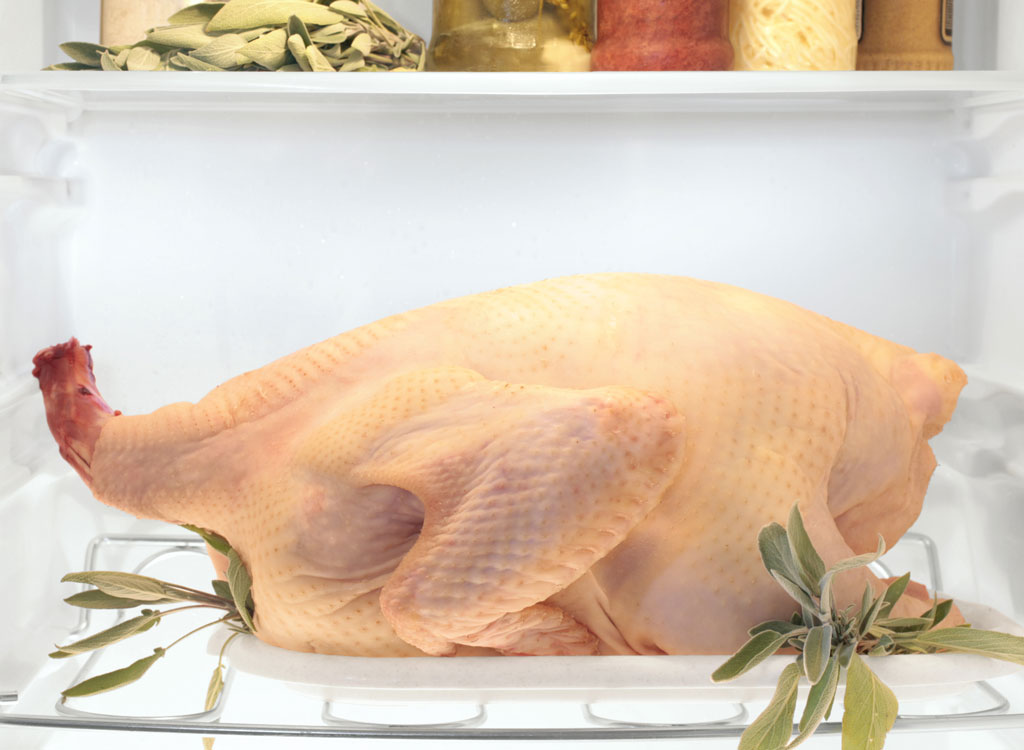
Be sure to thaw your turkey in the fridge or in a bowl with cool water. However, you can't just leave it sitting in the water. If you decide to defrost with this method, make sure to change it every 30 minutes, according to the CDC.
Keep turkey wrapped in plastic when thawing

Even though you may think taking off the plastic packaging on the turkey will make it thaw faster, you may want to think twice. Leaving your turkey to thaw sans wrapper means that the turkey can contaminate anything it's near (and you definitely don't want that around other food or in the fridge).
Steam the turkey first for extra moist meat
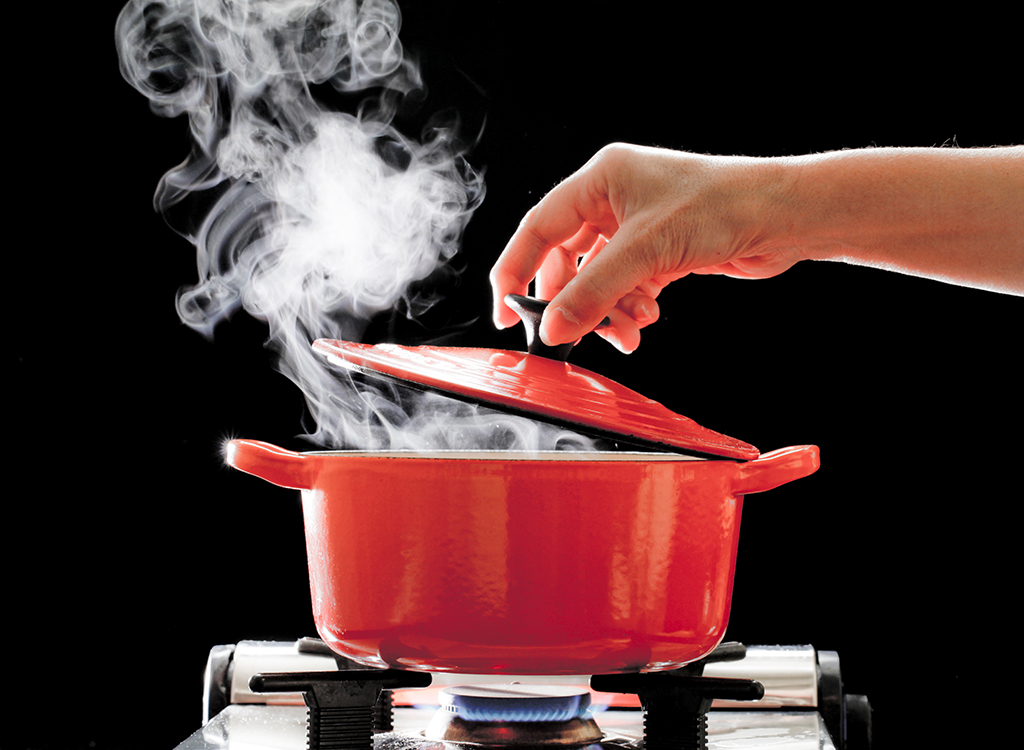
If you have a bit of extra time on your hands and want to ensure a super-moist turkey, Chef Angerer recommends steaming the turkey before you roast it for a turkey that is moist.
"Steam it to an internal temperature of 130 Fahrenheit and then transfer the turkey to a 375 Fahrenheit hot oven to an internal temperature of 160 Fahrenheit. This way the turkey will stay moist and won't burn on the skin side," says Angerer.
Stuff the turkey with fresh herbs
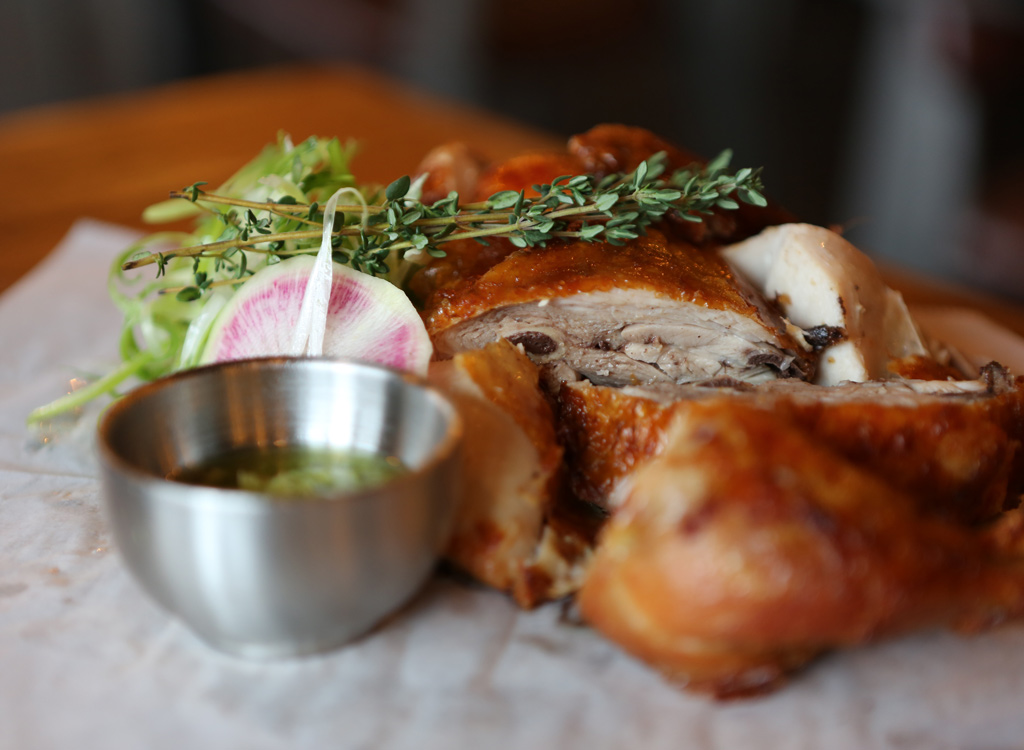
For an even more flavorful turkey, stuff it with fresh herbs like fresh sage, rosemary, and garlic cloves like Hangerer recommends. He also adds an apple with the herbs to take the flavor to the next level.
Brine the turkey for at least 12 hours
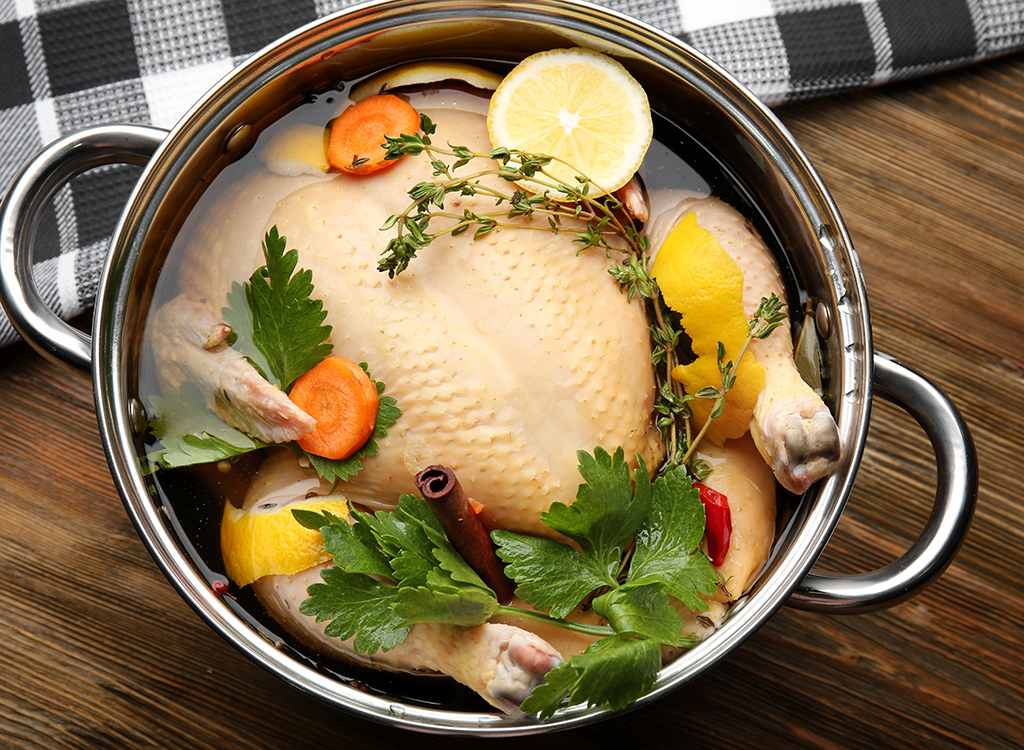
Brining the turkey will ensure a juicer, more well-seasoned bird. Angerer recommends brining a 12-pound turkey for 12-14 hours in a solution of 1 gallon of water and 1/2 cup of sea salt.
"It's salt-seasoned from the inside out this way," says Angerer.
Remove the giblet pack before you cook the turkey
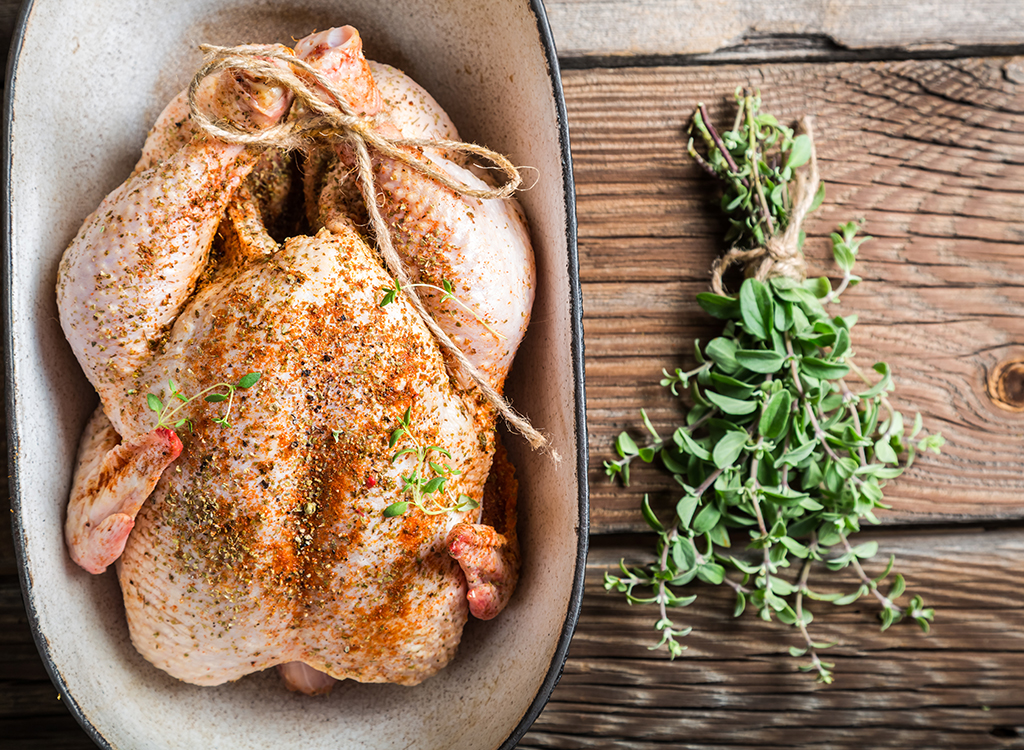
One easy way to ruin your turkey's taste is by forgetting to remove the package of turkey parts that are usually placed inside the turkey. These parts are ideal for using to make homemade turkey gravy.
Reserve the giblets for gravy
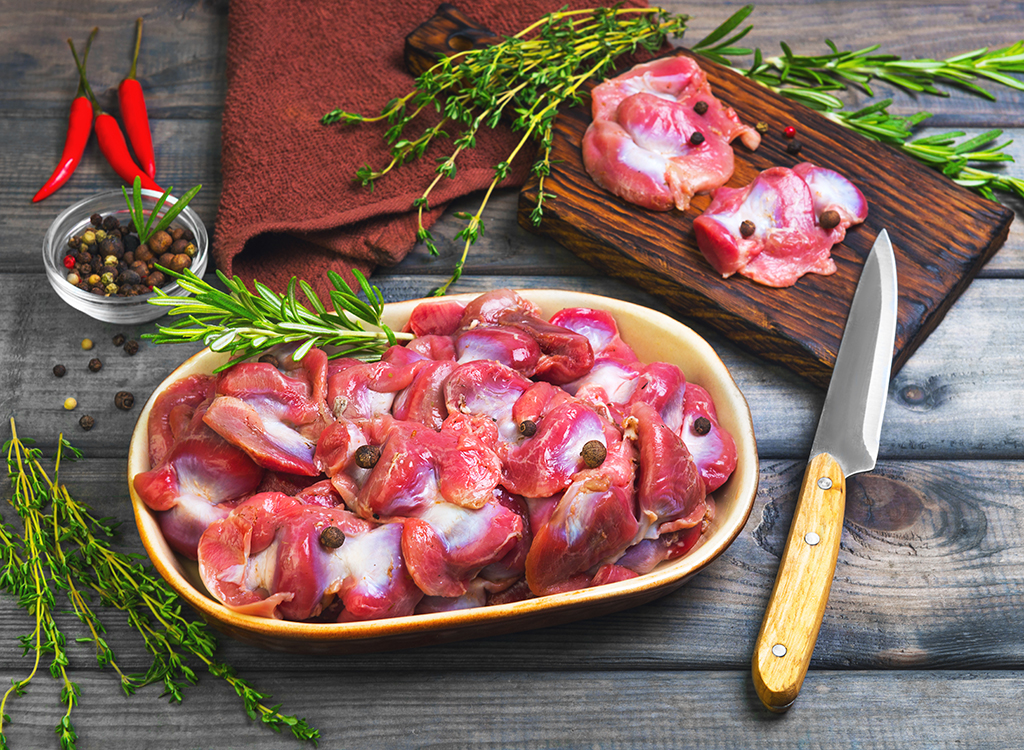
Once you remove the giblet pack, unwrap the parts and use it to make a stock. Once your turkey is cooked, you can use the pan drippings along with the stock to make a tasty gravy, like this one from Williams Sonoma.
Add seasoning in the skin
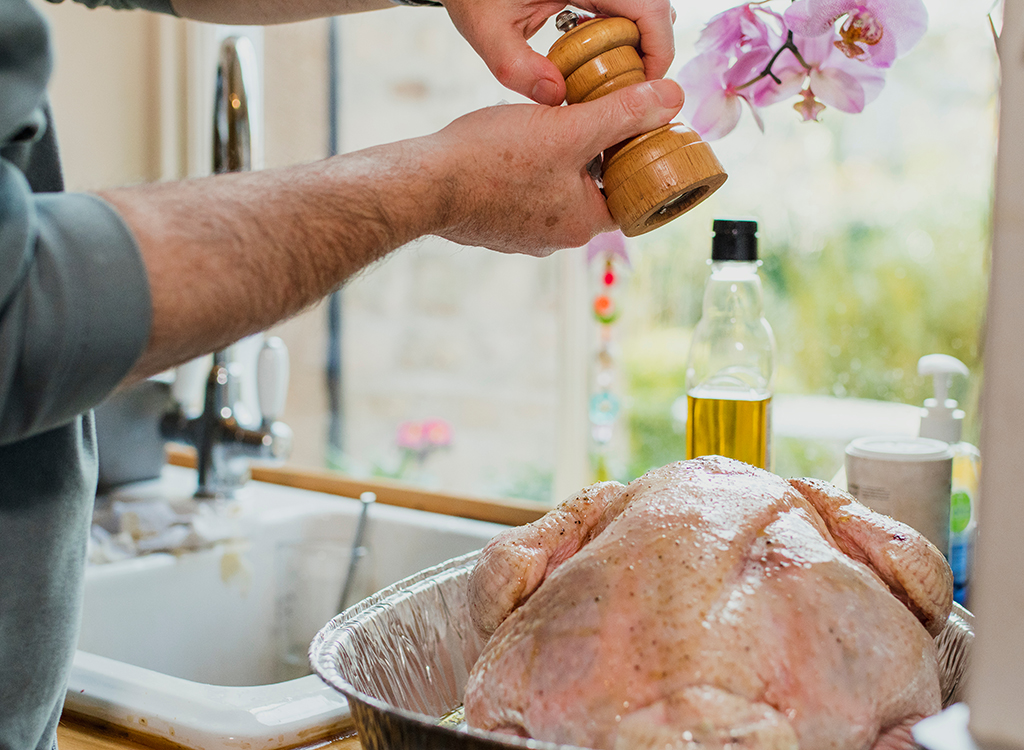
Chef Angerer recommends injecting the turkey with apple cider spices like nutmeg, cinnamon, allspice, honey, and apple cider. "This adds more moisture and flavor to the meat," says Angerer.
Safely stuff your turkey
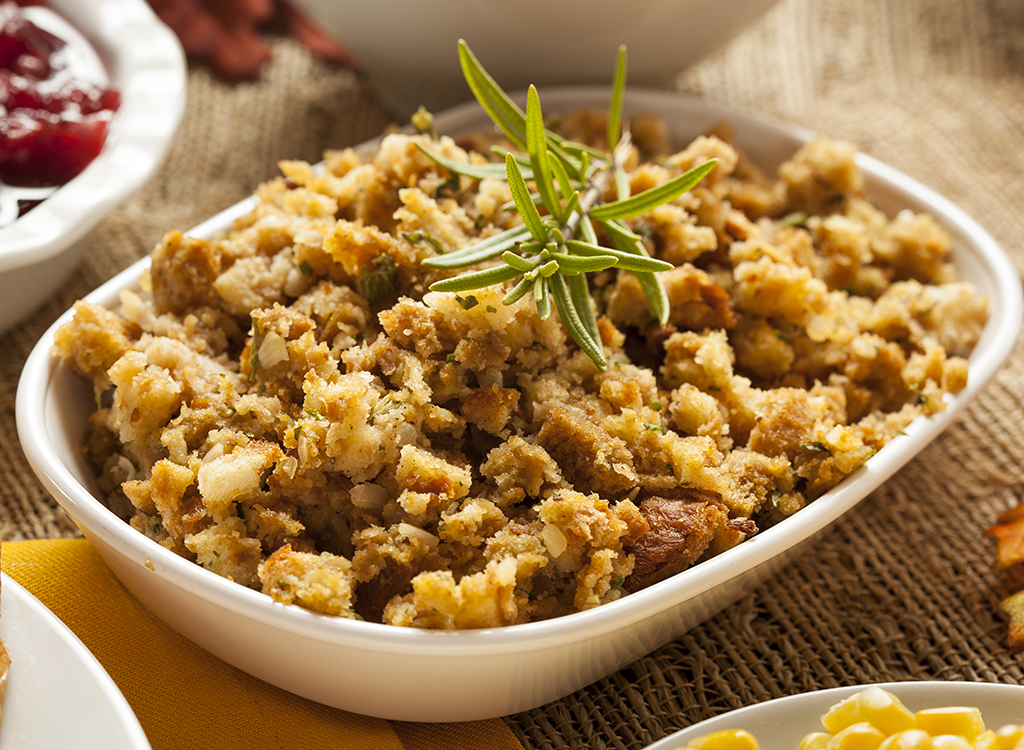
The CDC says that the stuffing inside the turkey can become a breeding ground for bacteria if not properly handled. You'll want to add the stuffing right before you cook it, and be sure to check the temperature of the stuffing, too (165 degrees Fahrenheit in the center of the stuffing is done).
Try stuffing it with veggies
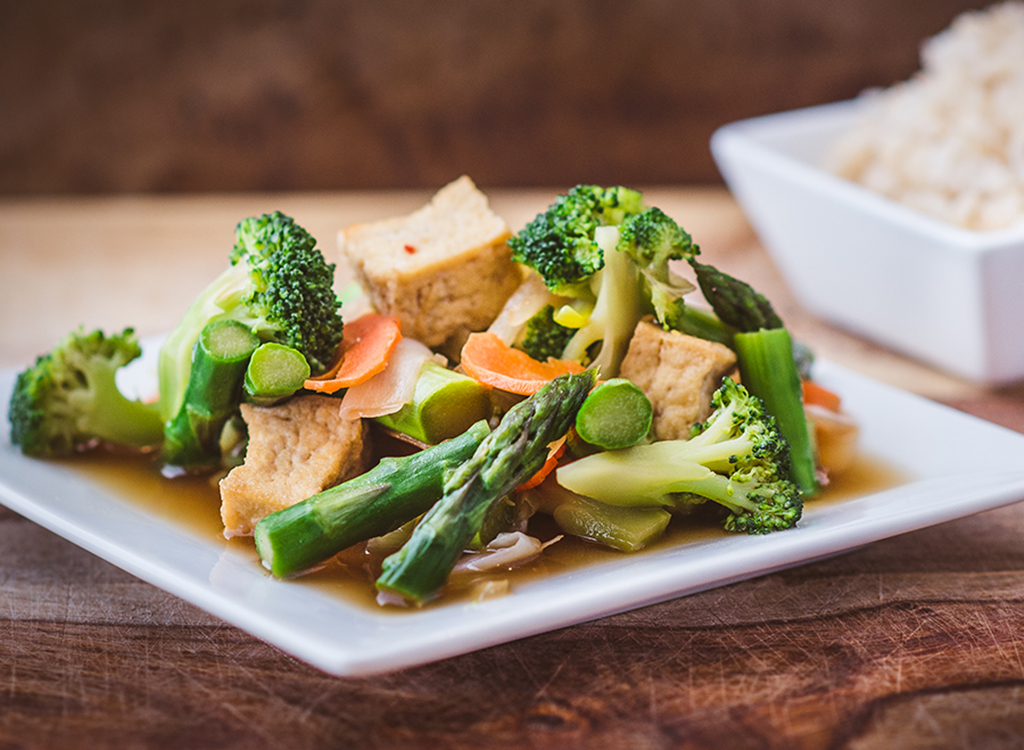
If you want to accommodate gluten-free eaters, or maybe you just don't prefer stuffing, you can opt to stuff the turkey with fresh veggies.
Baste the turkey often
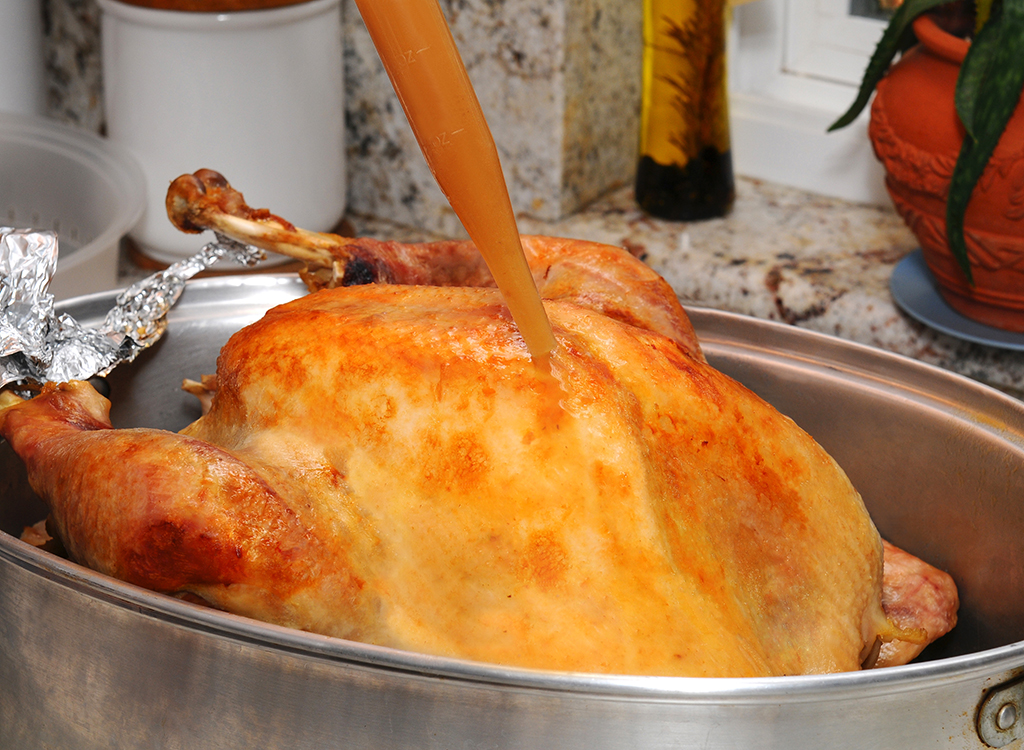
Ideally, you need to baste the turkey every half hour, according to Angerer.
Allow extra cooking time if you stuff with things other than veggies
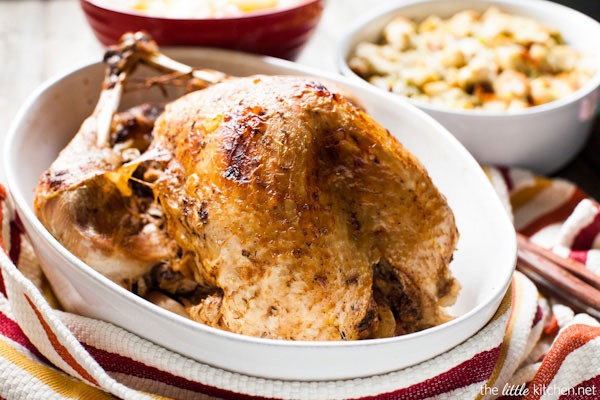
If you stuff the turkey with regular stuffing (and not just veggies), you'll want to allow a bit of extra cooking time. Make sure you do check the internal temp of the stuffing and ensure it's at least 165 degrees Fahrenheit.
Add roast veggies in the last 45 minutes for extra tasty sides
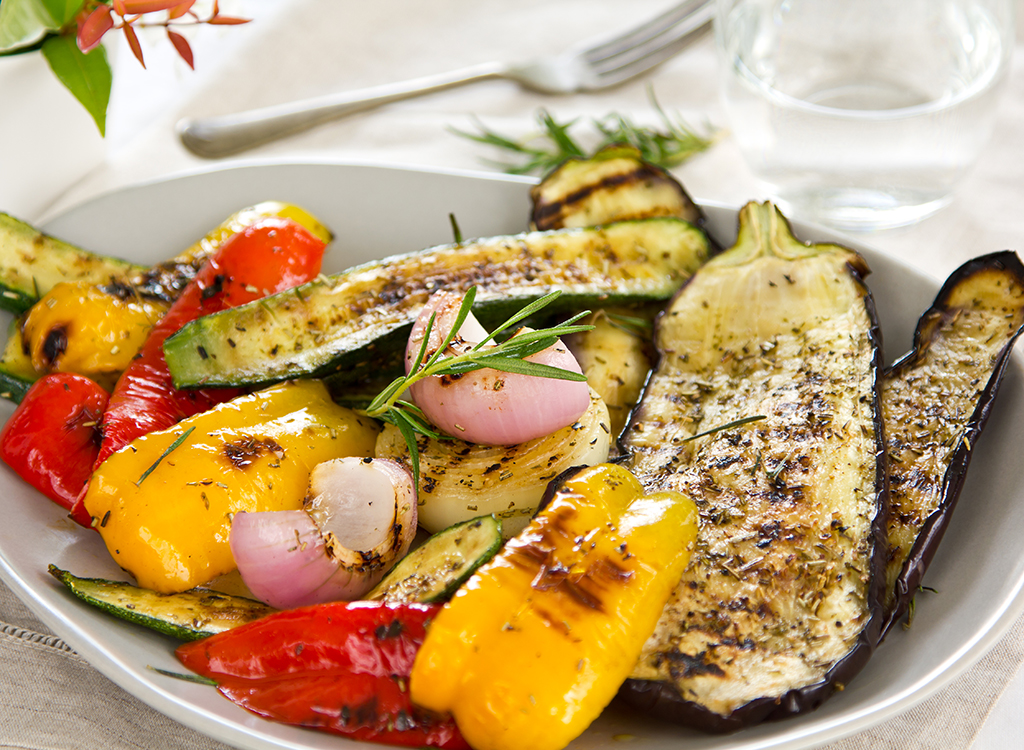
"In the last 45 minutes of the cooking time, add 1/2-inch-size cubed carrots, celery, and sweet potatoes. The turkey roasting juices will make the vegetables super tasty," says Angerer.
Try slow cooking your turkey
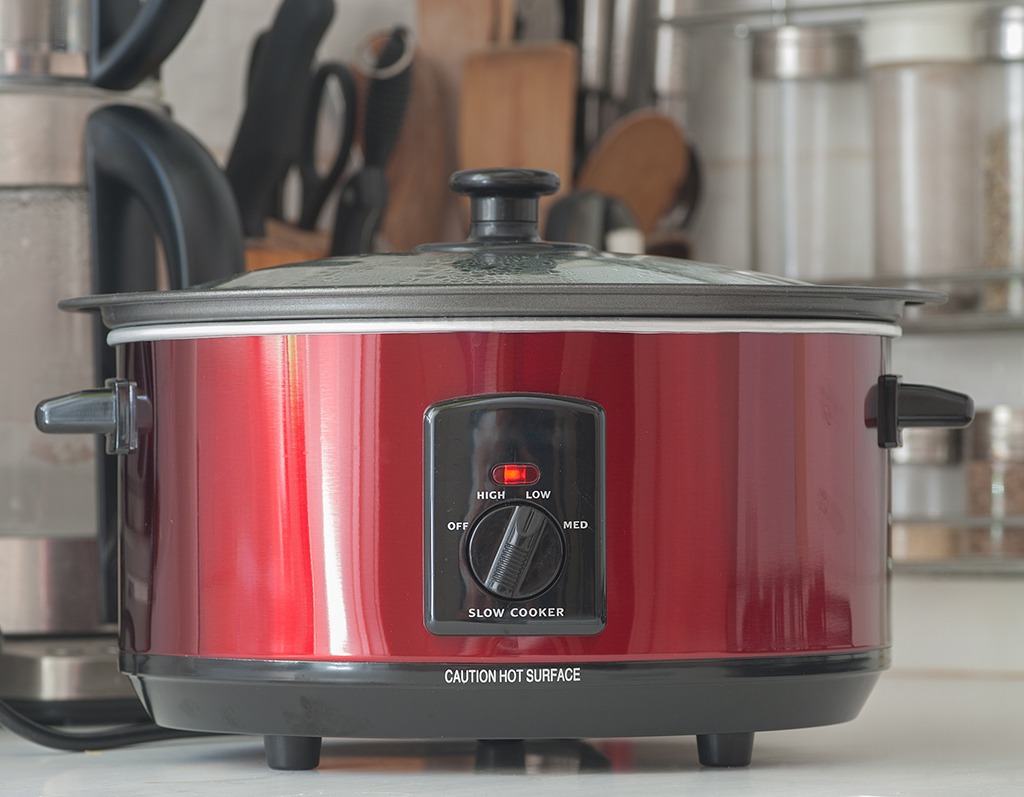
If you're a turkey newbie (or don't consider yourself a whiz in the kitchen), consider making a slow-cooker turkey this year. Slow cooking a turkey is a great option if you know you'll be way too busy to go through the traditional roasting process.
Fry the turkey if you're in a hurry
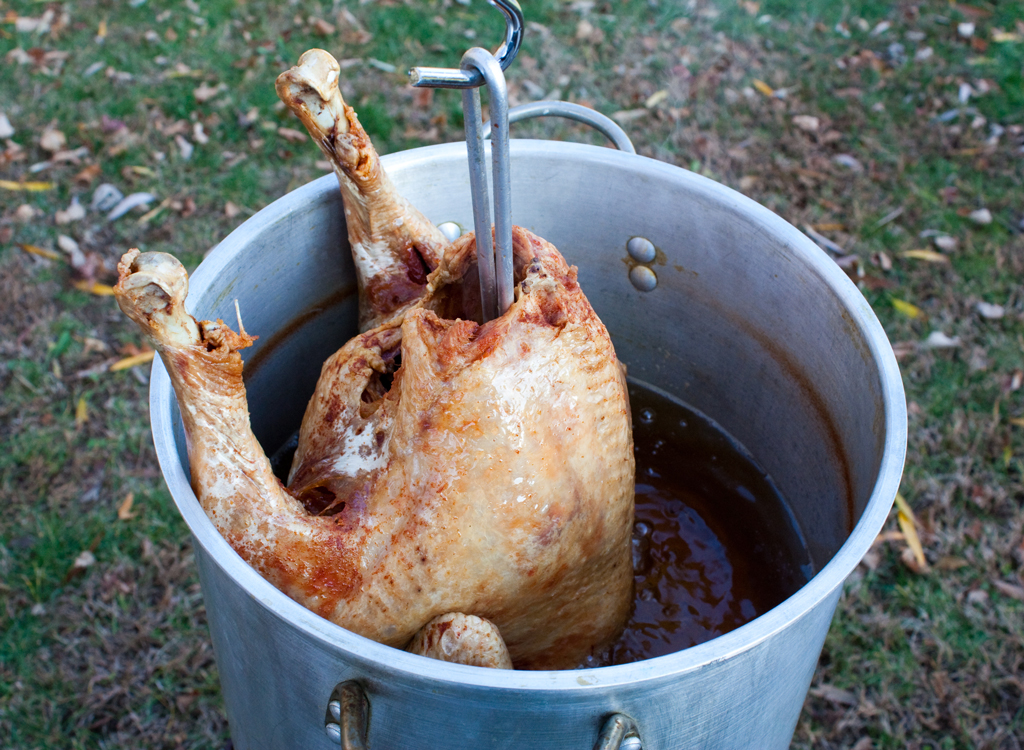
Frying your turkey (while not the healthiest option) is definitely one of the quickest ways to cook your turkey in a pinch. For an extra-indulgent turkey this year, try this recipe from Alton Brown.
Reserve pan drippings for gravy
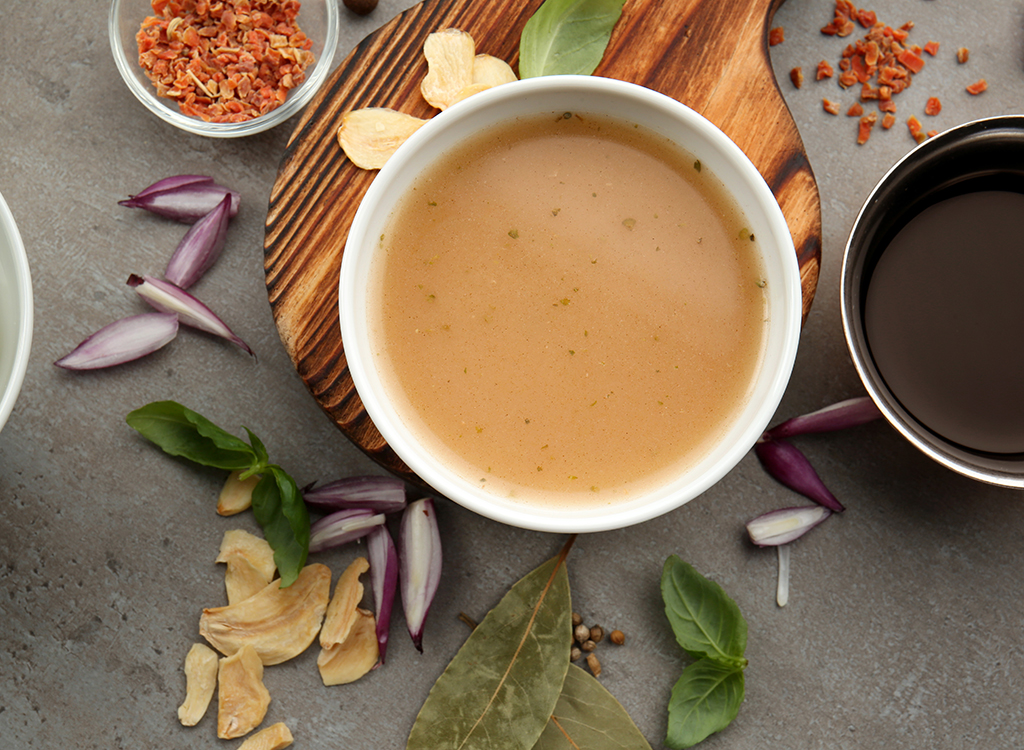
Whatever you do, don't throw out the drippings in the pan when your turkey is done.
"The drippings from your turkey are the primary ingredient needed to make a delicious gravy. A combination of turkey drippings, water, and flour will be the perfect complement to your turkey dinner (and your mashed potatoes, of course)," says Shea.
Add broth, gravy, or both if the turkey comes out dry
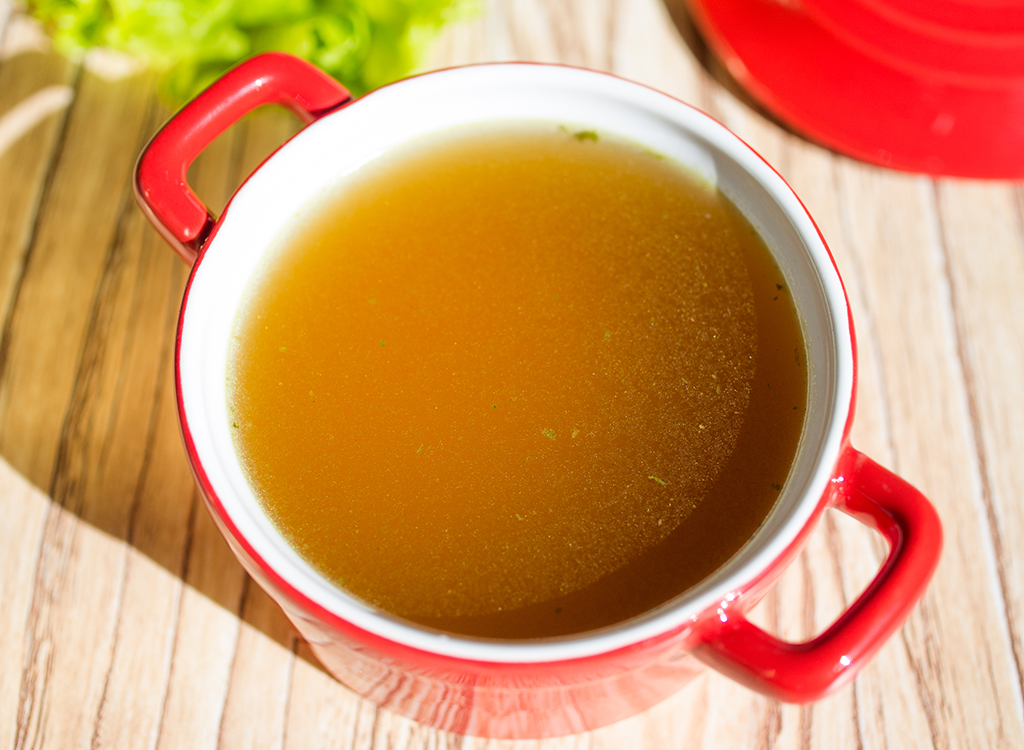
It happens to the best of us. Sometimes, despite our best efforts, the turkey came out dry. Good thing a dry turkey can be saved with the addition of broth, gravy, or both.
Use a sharp carving knife
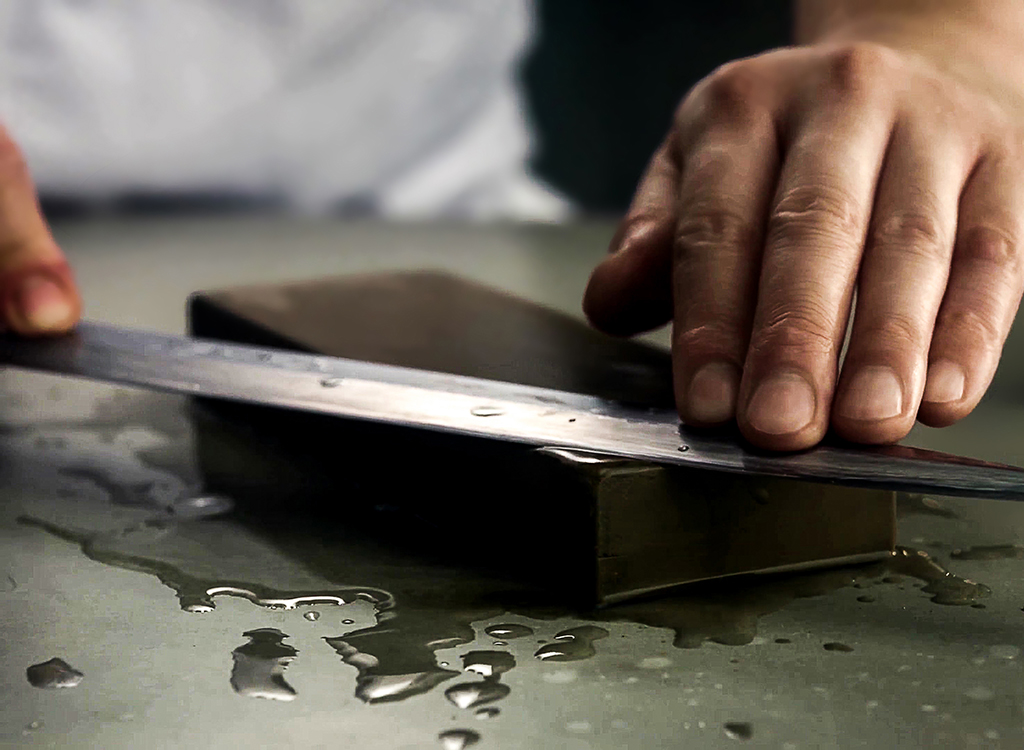
Carving the turkey is the last step before enjoying it, so you want to get it right. "There are indeed efficient ways to carve a turkey, and it starts with having a sharp knife. Once you're equipped with a sharp knife, be sure you learn the best way to carve a turkey so you can get the most flavorful pieces with minimal waste," says Shea.
Reserve the turkey carcass to make bone broth
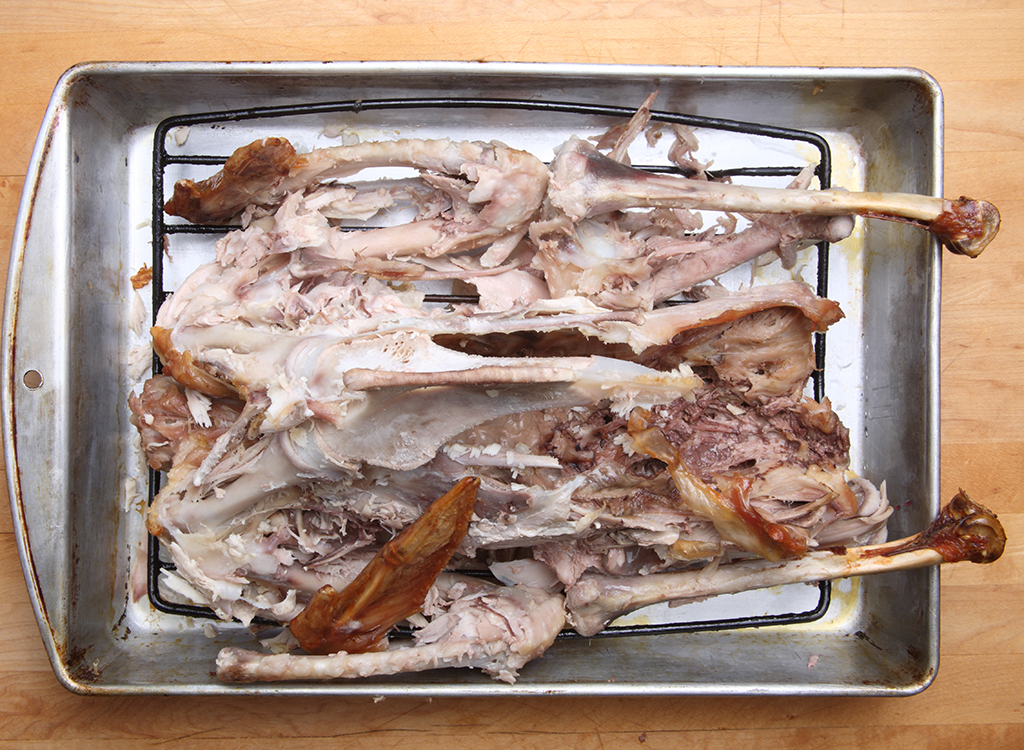
It's no secret that bone broth is seriously popular these days, but should you be drinking it? It has a ton of health benefits, so why not save the turkey carcass post-Thanksgiving dinner for a delicious bone broth you can sip on in cooler temps. Once you have it, here are some bone broth recipes you can try.
For more, check out these 108 most popular sodas ranked by how toxic they are.
